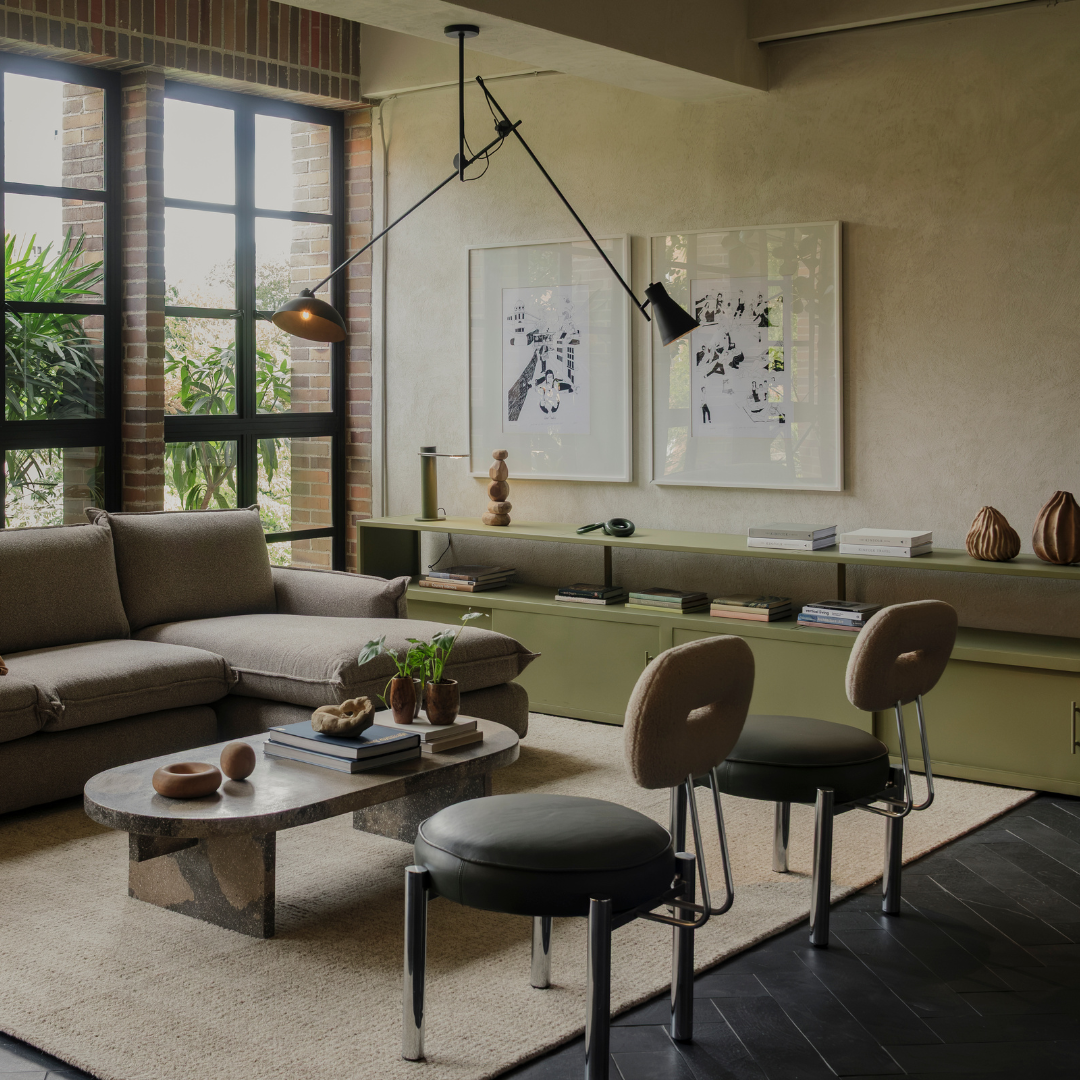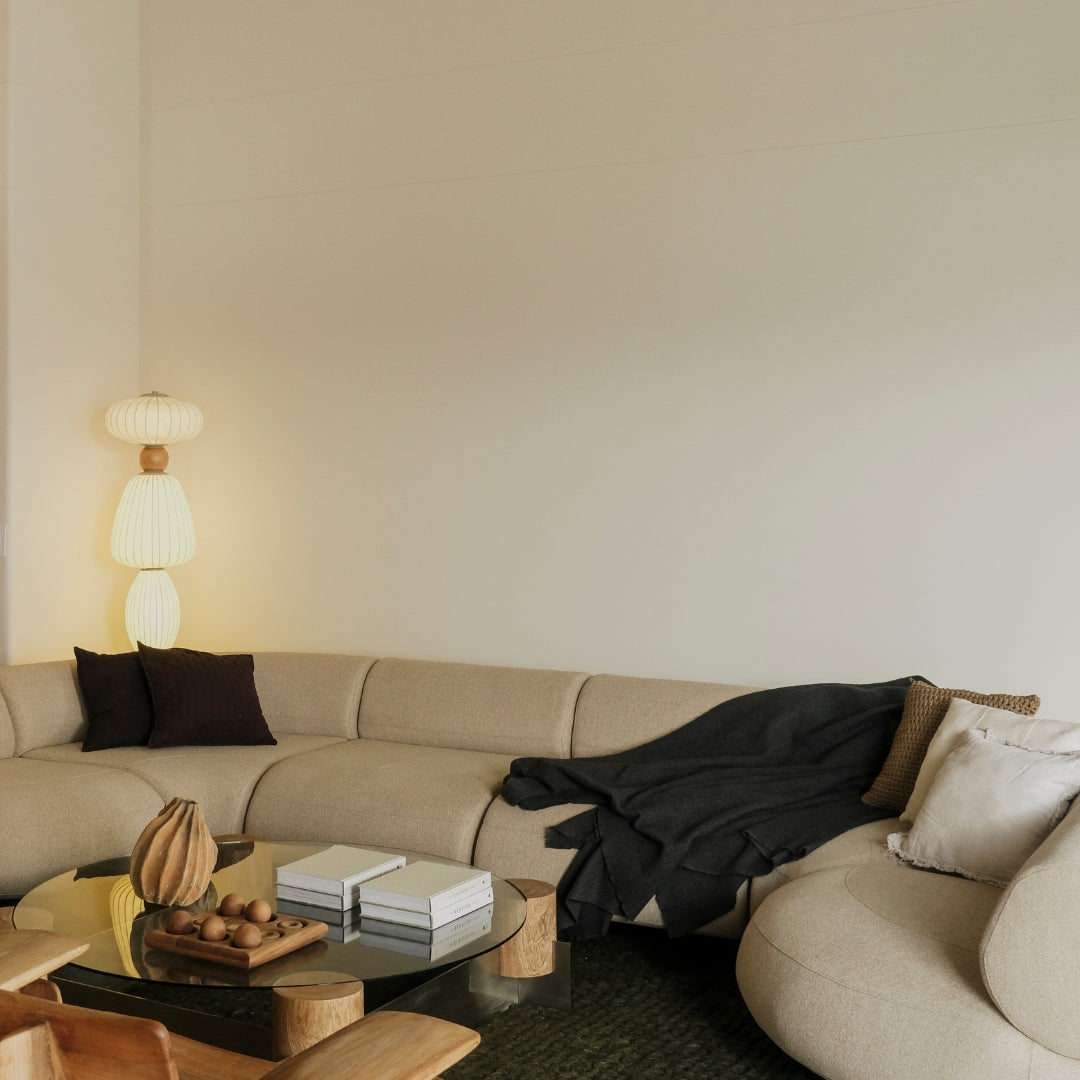Color and material: an inseparable conversation
For us at Diamantina & La Perla, color is never just a superficial layer. It is the result of a deeper dialogue between material, light, and use. The same shade changes depending on where it is used: it does not look the same on lacquer as it does on linen, on wood as it does on ceramic, on a wall as it does under a light.
The same shade can become dry, dense, ethereal, or vibrant. That's why choosing the color of a sofa is not just an aesthetic decision; it's an emotional choice. The same goes for lamps: a ceramic base in earth tones not only illuminates, but also provides stability. An off-white shade not only filters the light, but also invites calm.
What colors are inhabiting spaces today?
We're not going to make a list; it's not necessary. But we recognize them when they appear. They share an earthy, mineral, vegetal, or worn quality. They don't shine; they're not smooth. They're more like a moving shadow than a block of flat color.
These are colors that don't seek the limelight; they seek to belong. Colors that resist the passage of time precisely because they don't follow it.
Sofas and lamps: color as part of the object
On sofas, these tones become skin. They don't just cover, they envelop. Upholstery in serene tones—between ecru, cocoa, dry green, or mineral blue—allows the furniture to blend into the space without disappearing. It is present without imposing itself.
In lamps, color defines the emotional temperature. A sandy-colored fabric shade can completely transform the feel of a room. A toasted ceramic base can anchor a corner without saying more.
Combinations that follow feelings, not rules
Forget formulas. What works today is what feels coherent. Mix a neutral tone with a deep one, a warm one with a dry one, a soft one with a textured one. It's about creating layers, not contrasts.
Imagine a living room where bone linen, black iron, and olive green coexist without competing. A dining room where black wood is accompanied by soft honey-colored chairs. A reading space where light rests on a grayish sofa.
None of this responds to the “color of the year.” It responds to a deeper sensibility.
Color as an emotional decision, not an aesthetic one
Choosing the color of a sofa is not trivial; it is deciding how we want to feel when we are tired. Choosing a lamp is not just about lighting; it is about framing an everyday moment.
From that perspective, color ceases to be an external imposition and becomes something that comes from within: from experience, from use, from desire.



